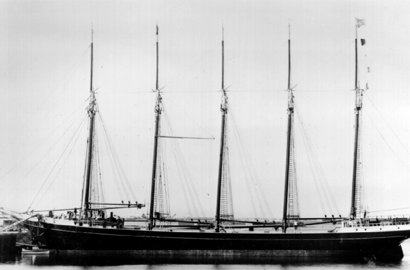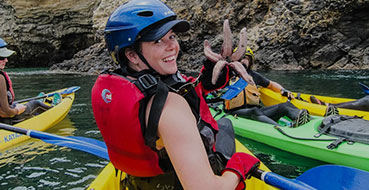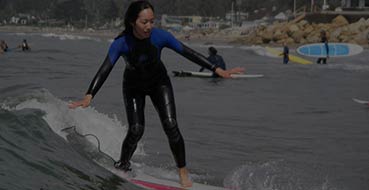After 20 years of searching, a team of divers has found the George E Billings sunken in the Channel Islands Marine Sanctuary. The George E Billings was a five-masted lumber schooner/fishing barge with a gross tonnage of 1,260 tons. It was 224 feet long, 42 feet wide and had a draft of 18 feet. It was constructed of wood with one deck. This was the last vessel built by Hall Brothers and the largest lumber schooner lost in the Channel Islands. By 1930, after years of delivering lumber, the ship was converted to a fishing barge at Santa Monica. The ship was towed to an area north of Santa Monica and scuttled in early February 1941.

“The discovery of the Billings is a result of excellent collaboration with the local community,” Robert Schwemmer, maritime archaeologist for NOAA’s Office of National Marine Sanctuaries said. “Now we can write the final chapter of not only the largest, but the last sailing vessel built by the Hall Brothers during their 30-year career of designing some of the finest ships sailing the Pacific.”
The shipwreck will be protected under state and federal law, and it is illegal to disturb or damage any archaeological sites in sanctuary and park boundaries. The Billings shipwreck remains are now owned by the state of California and managed by the California State Lands Commission. “The Channel Islands National Marine Sanctuary and Channel Islands National Park are a world destination for sport diving,” said Chris Mobley, sanctuary superintendent. “For years, divers have shared new discoveries with both federal agencies and we commend them for their spirit of stewardship so these historic resources can be surveyed and shared with the American public.”
About the Channel Islands Marine Sanctuary:
Established in 1980, the sanctuary is an area of national significance because of its exceptional natural beauty and resources. It encompasses the waters that surround Anacapa, Santa Cruz, Santa Rosa, San Miguel and Santa Barbara Islands (five of the eight Channel Islands of California), extending from shore around each of the five islands. The sanctuary’s primary goal is the protection of the natural and cultural resources contained within its boundaries.
Historical information courtesy of Justin M. Ruhge
Photo courtesy of the San Francisco Maritime National Historical Park.

